Influencer marketing has become a crucial means for brands to promote their products. Inviting influencers to post content and participate in offline events has gradually become one of the most popular advertising formats. Brands, besides taking the lead in collaborative projects, are increasingly opting for cross-industry collaborations.
From devising collaboration details to executing activities, they engage with other brands or influencers to exchange ideas and review subsequent effectiveness, aiming to create significant brand benefits through cross-industry collaborations. KOL Radar, an exclusive AI influencer database, assists brands in finding suitable influencers for cross-industry collaborations to create business opportunities.
What Is Cross-Industry Collaboration?
Cross-industry collaboration refers to two or more enterprise brands working together to leverage technological cooperation and resource exchange to combine the strengths of both sides while aiming to enhance market competitiveness, and marketing effectiveness, and reduce costs. This ultimately maximizes brand benefits.
What Are the Common Marketing Models for Cross-Industry Collaboration?
- Brands*Brands
The well-known sensitive toothpaste brand “舒酸定(Sensodyne)” collaborated with the popular ice cream brand “百吉 POKI” in June of this year to launch a limited-time pop-up event. Through this cross-industry collaboration with POKI ice cream bars, 舒酸定(Sensodyne) successfully broke the perceived barrier between seemingly conflicting product images by promoting the idea that “using 舒酸定(Sensodyne) toothpaste allows you to enjoy ice cream without hesitation.” This collaboration generated significant buzz and attention.
In addition to jointly launching co-branded products, the brands also collaborated with influencers on social media to conduct giveaway activities. Through influencer marketing, they expanded the benefits of cross-industry collaboration.
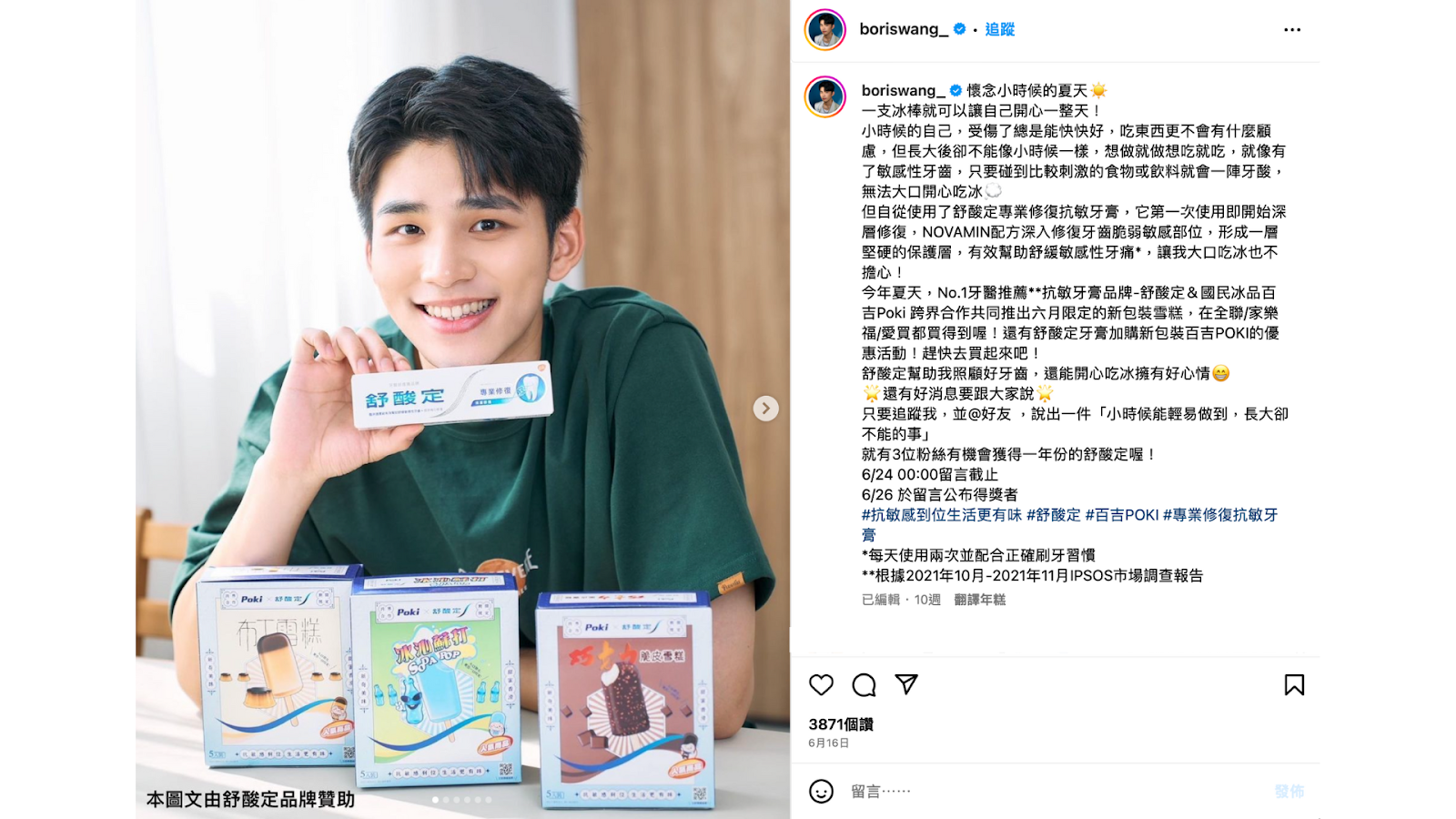
Source: 王品澔 Boris-Instagram
- Brands*Artists
The Japanese clothing brand UNIQLO frequently collaborates with various artists. In 2016, they partnered with KAWS to launch their first joint clothing collection, sparking a frenzy of people lining up to purchase their collaborative products. Following the success of this collaboration, UNIQLO and KAWS continued to release additional series of products, with each collaboration yielding substantial profits for the brand. Additionally, the high level of online discussion surrounding these collaborations has attracted increased attention to KAWS.
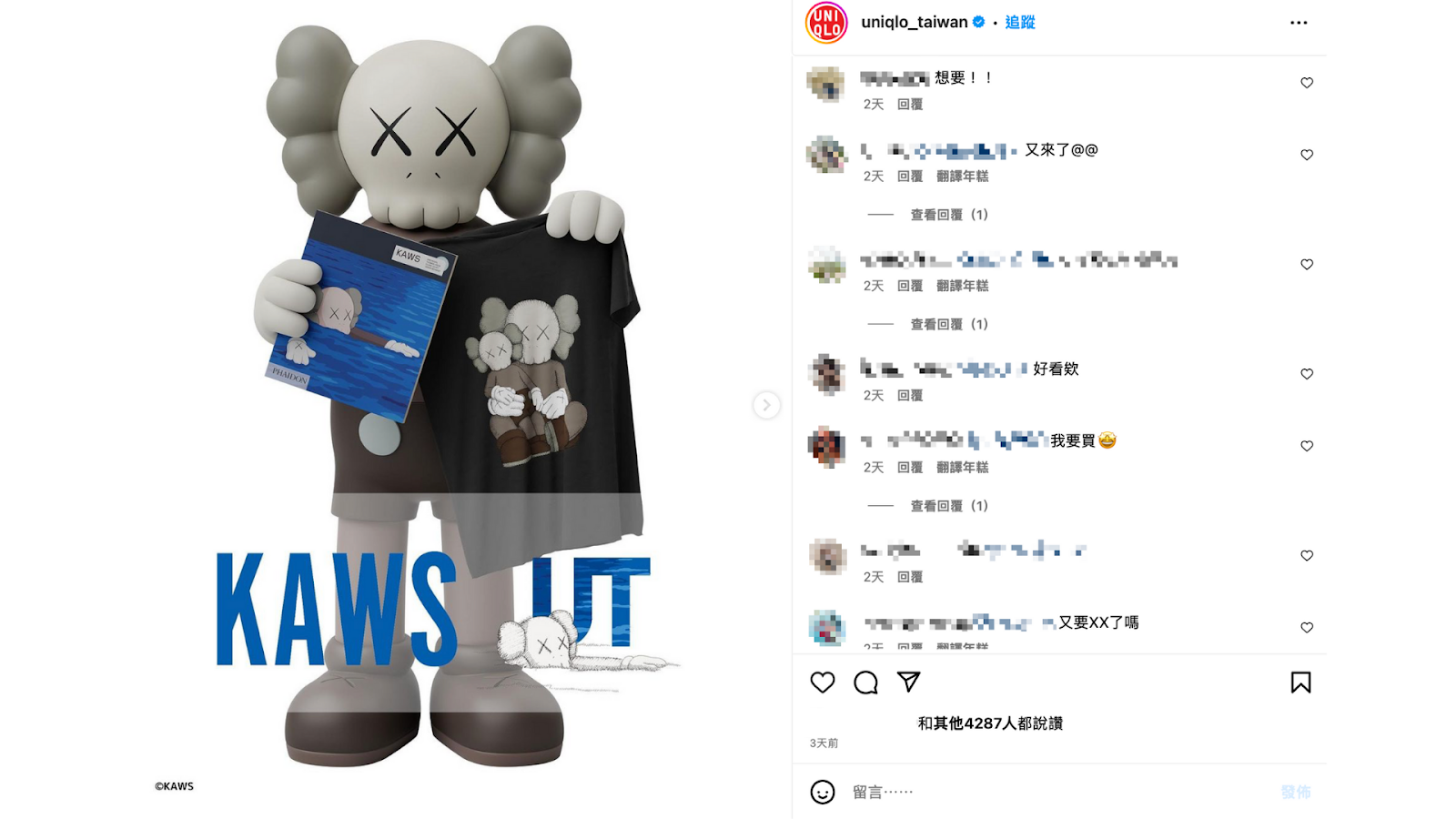
Source: UNIQLO_Taiwan-Instagram
- IP collaboration
The renowned bubble tea shop “鶴茶樓” collaborated with the popular Korean original brand “Shop1107″ to launch peripheral products that featured cartoon patterns printed on their paper cups, which attracted customers to make purchases. Capitalizing on the recent Korean wave trend, 鶴茶樓 maximized its benefits through cross-industry collaboration with Shop1107.
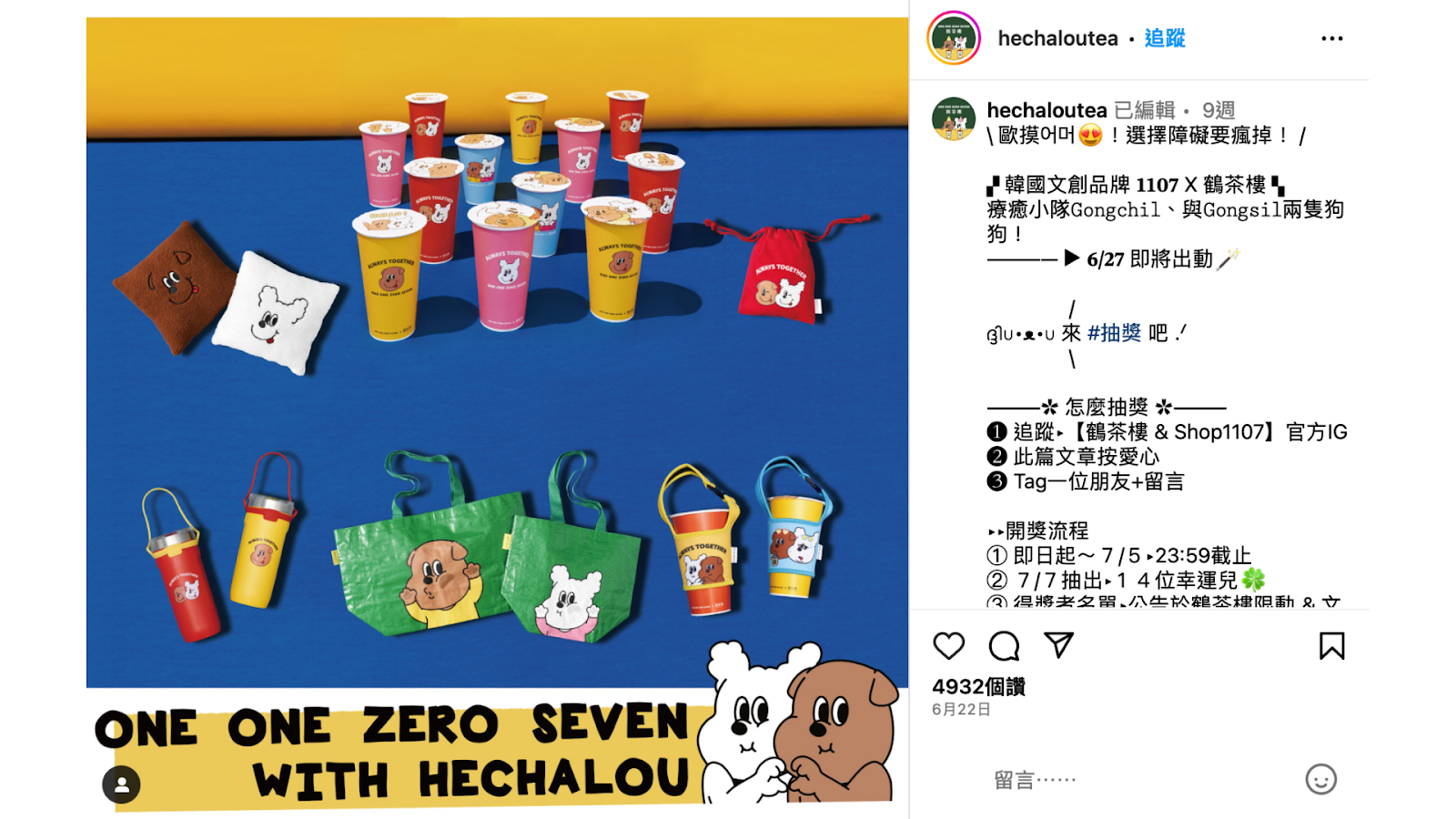
Source: 鶴茶樓-Instagram
- Brands*Influencers
The Japanese clothing brand “mimi toujours” collaborated with the Taiwanese Japanese-style influencer Peachi for an international cross-industry collaboration. They regularly release new collaborative clothing items each month. In the upcoming fall-winter season, this collaboration will officially become a subsidiary brand of Mimi Toujours, with Peachi taking on the role of the chief planner for this subsidiary brand. The collaborative clothing line has gained immense popularity since its launch. Recently, many young people in Taiwan have shown a fondness for Japanese-style clothing, and Japanese brands have recognized Peachi’s influence in the Japanese fashion circle. As a result, they engaged in long-term joint collaborations, co-planning and producing clothing items together.
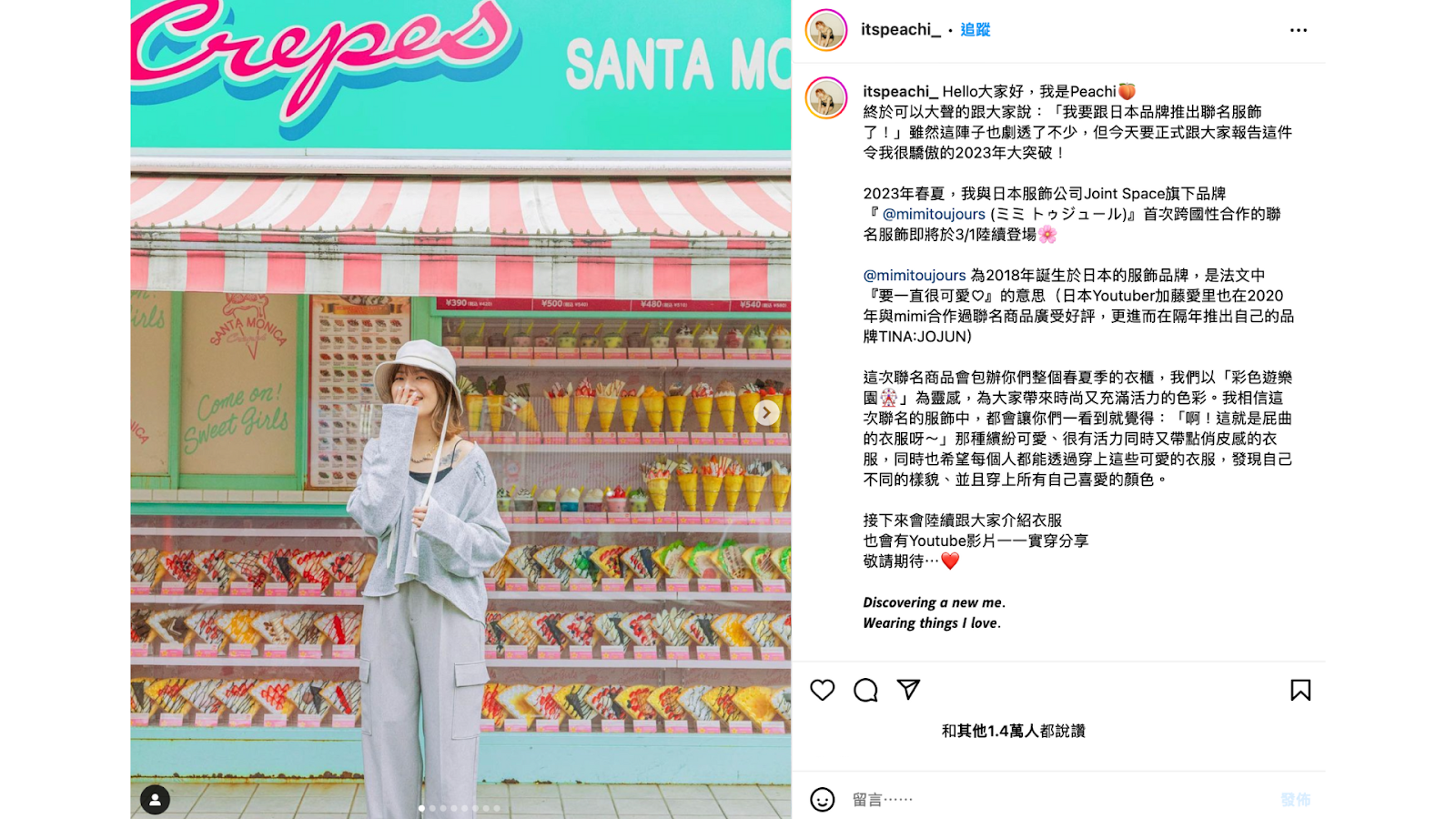
Source: Peachi-Instagram
What Are the Advantages of Cross-Industry Collaboration Between Brands and Influencers?
- Elevates brand exposure and visibility
The renowned food enthusiast influencer 千千 has been collaborating with the brand “金豐盛” which sells fresh chicken meat for over three years, serving as the brand ambassador for their cross-industry collaboration. Together, they have launched specialty-flavored chicken breast products. In addition to promoting the products, 千千 actively participates in discussions and taste-testing, incorporating influencer feedback to adjust flavors and enhance the freshness and buzz surrounding the products. Furthermore, through social media posts and the strategic use of hashtags tagging the brand or event slogans, the influencer has successfully increased brand exposure.

Source: 千千-Instagram
Based on the KOL Radar hashtag frequency analysis, we observed that the hashtags “金豐盛在全家” (金豐盛 at FamilyMart) and “金豐盛” ranked among the top 5 in terms of usage frequency in 千千’s community over the past six months. Moreover, their interaction rates exceeded 0.6%, indicating a significant level of exposure enhancement for these two tags on social media.
千千’s cross-industry collaboration with 金豐盛 utilizes visual and textual promotion, supplemented by brand hashtags to increase the brand’s exposure on social media. Leveraging the influencer’s reach, bridges the brand with potential customers, thereby expanding business opportunities.

Source: KOL Radar
- Enhances the uniqueness and value of the product
Many fashion brands enjoy collaborating with celebrities or influencers to release limited edition co-branded products, often causing buying frenzies and even instances of resale at high prices.
This year, BLACKPINK member Jennie collaborated with Calvin Klein for a cross-industry partnership, and they launched limited edition clothing. In addition to incorporating color elements that align with Jennie’s preferences, she also added her personal touch by using a hand-written brand name turned into embroidered logos, adding uniqueness to the simple pieces.
The items sold out immediately upon release on the official website, showcasing how collaborations between brands and well-known celebrities or influencers can bring significant business opportunities.
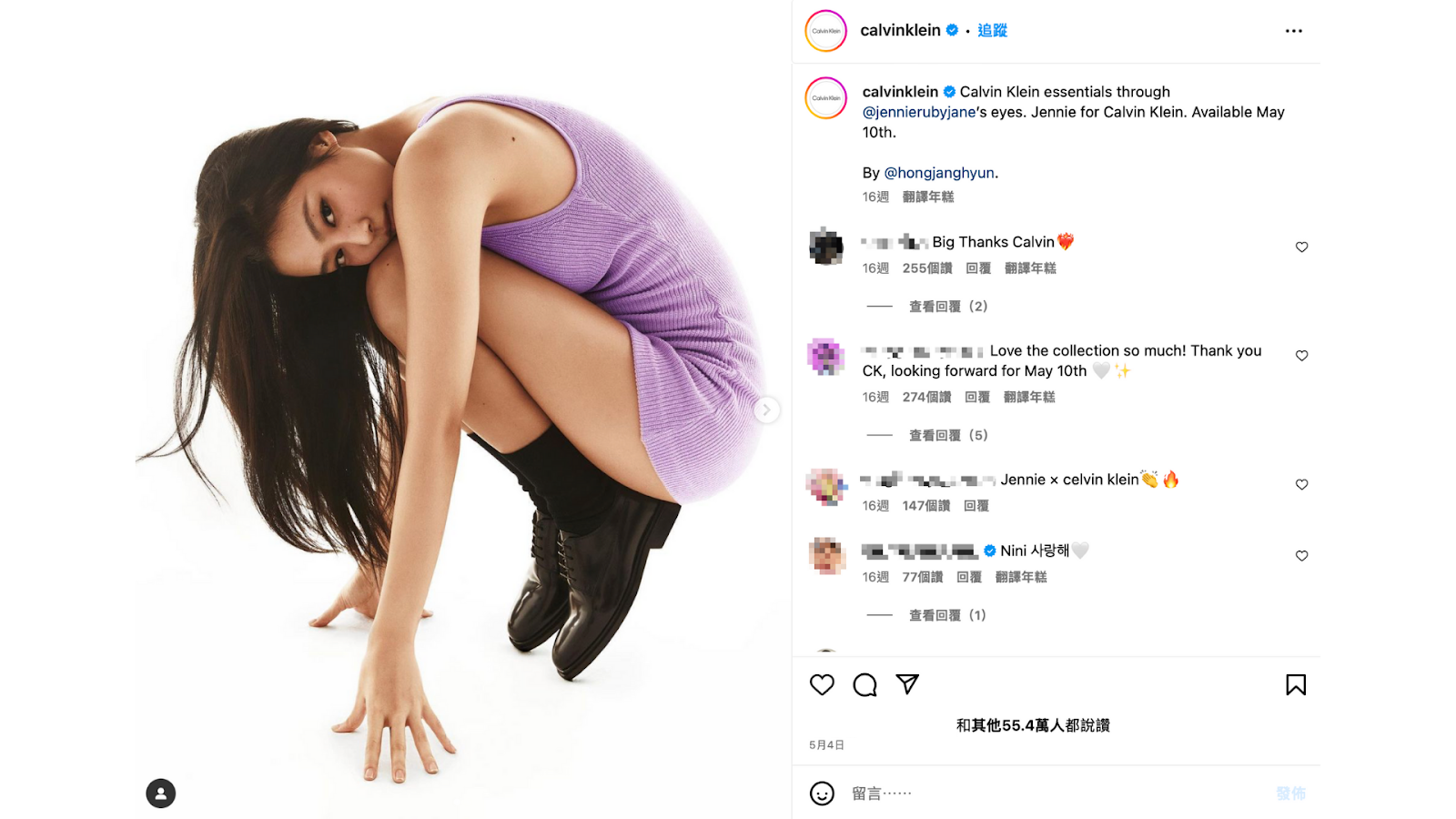
Source: Calvin Klein-Instagram
- Attracts potential customers
When engaging in cross-industry collaborations, having the collaborating influencer’s audience align with the brand’s target demographic can be advantageous in attracting potential customers. Through KOL Radar’s “Audience Demographics Analysis” feature, by observing the influencer’s audience age and gender, brands can analyze the alignment between the influencer’s audience and the brand’s target demographic with precision. This allows brands to tailor their strategies to target potential customers more effectively.
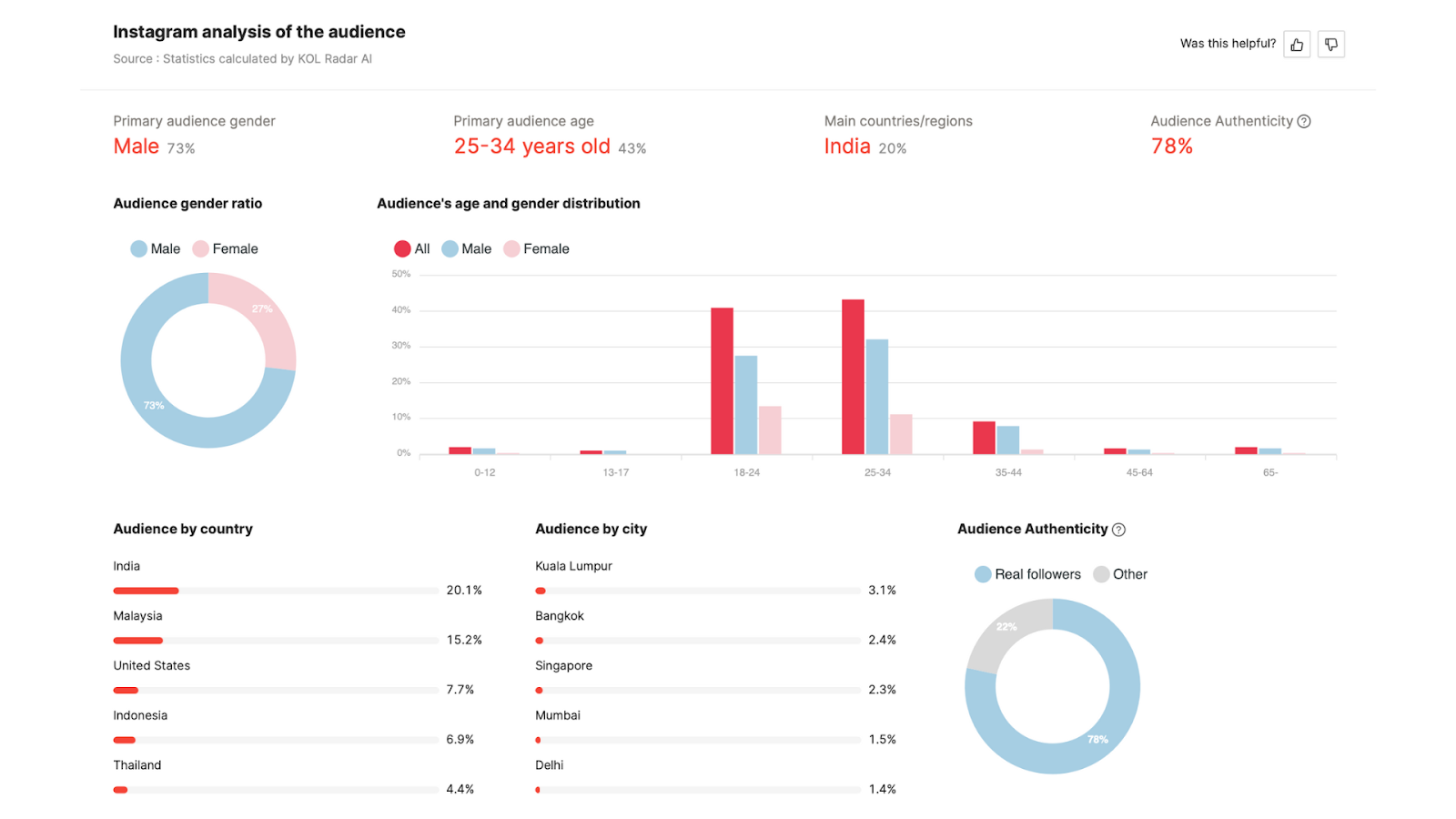
3 Key Points for Conducting Cross-Industry Collaboration With Influencers
- Targeting the precise audience to accurately match influencers
What should a brand do when selecting influencers for cross-industry collaborations? Aside from understanding the potential customer base to decide on collaboration partners, if brands aim to attract a diverse range of customers and expand their audience, they can utilize KOL Radar to observe the types and content of influencers’ creations. By choosing to collaborate with influencers whose characteristics and images differ from those of the brand, brands can generate discussions and create even greater business opportunities.
Through the radar chart insights provided by KOL Radar on the distribution of content types created by influencers, brands can observe the audience categories of influencers based on the proportion of their content types. This analysis assists brands in evaluating the effectiveness of influencer collaborations and subsequently selecting suitable collaboration partners.
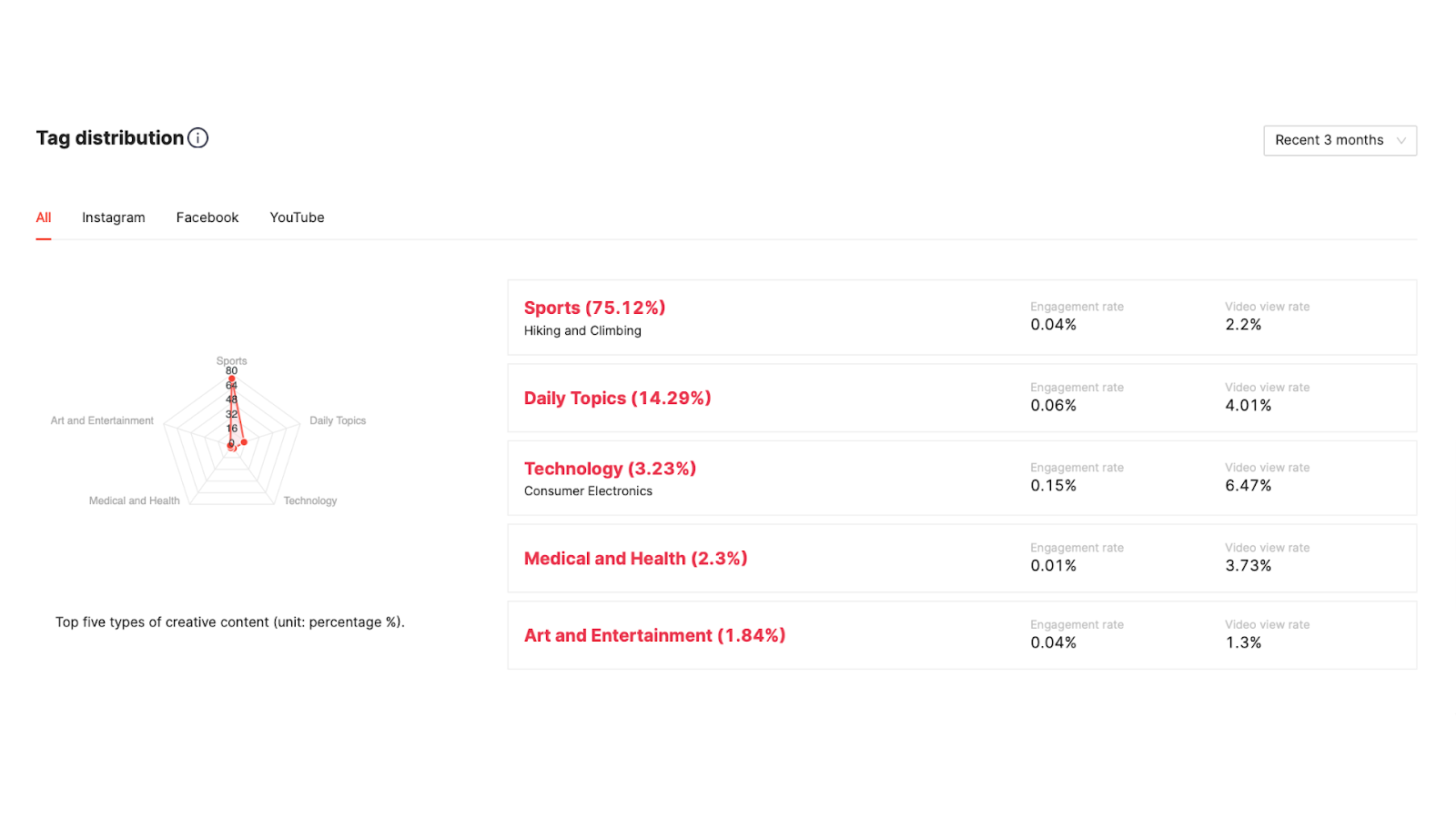
Source: KOL Radar
- Integrating O2O marketing and utilizing AI to evaluate marketing effectiveness
In addition to online promotional posts, hosting offline events can increase brand visibility and generate buzz. By inviting influencers to participate in these events, brands can rapidly boost their media exposure. For example, many brands have invited influencers to act as “one-day shop managers.” This not only attracts fans to attend and support the event but also allows influencers to share relevant event information on their social media platforms. This helps generate excitement for the event and maximizes exposure to the brand’s marketing activities.
If the brand needs to evaluate the effectiveness of the influencer’s cross-industry collaboration after the event ends, they can utilize the Deep Report feature provided by KOL Radar to generate an analysis. In addition to viewing data on the 3 main indicators: engagement, performance, and conversion, the report also includes charts analyzing the effectiveness of influencer marketing across social media platforms and post-data analysis. This allows brands to assess the benefits of influencer collaboration comprehensively.
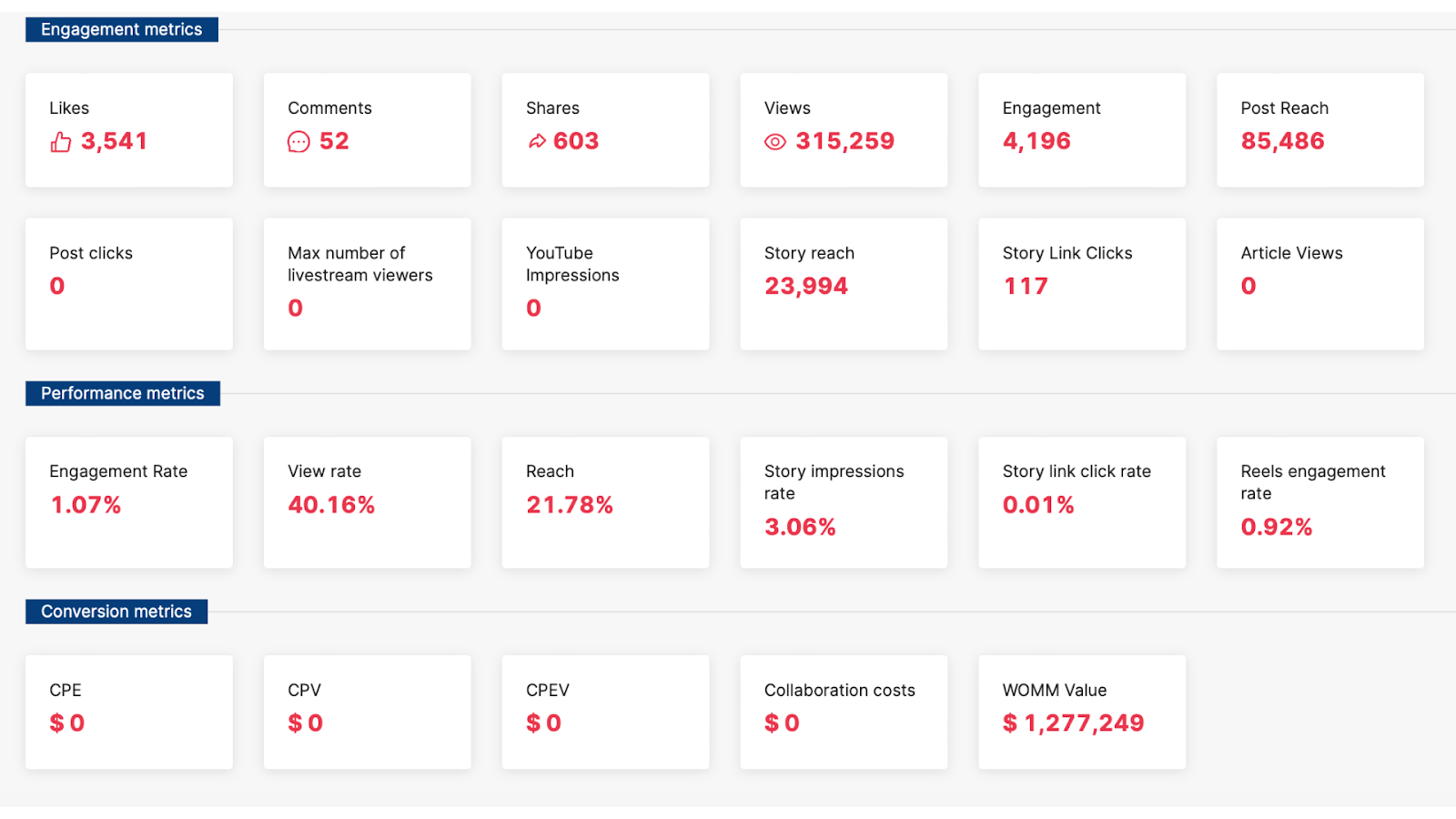
Source: KOL Radar
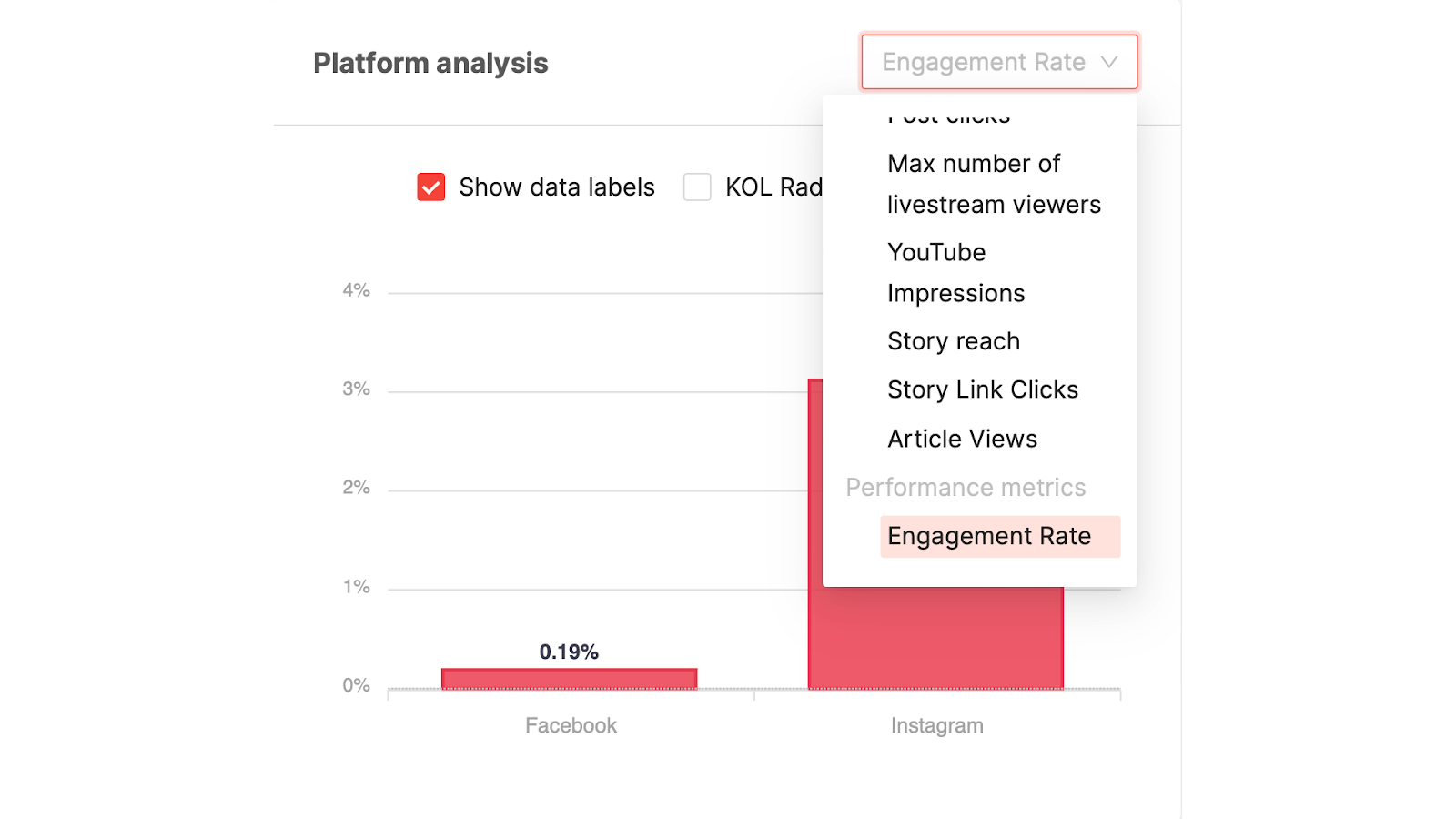
Source: KOL Radar
- AI prediction of influencer collaboration effectiveness
After the cross-industry collaboration ends, brands can input the name of the influencer or the event directly into the Deep Report to instantly grasp the effectiveness of the campaign conduct reviews and make adjustments.
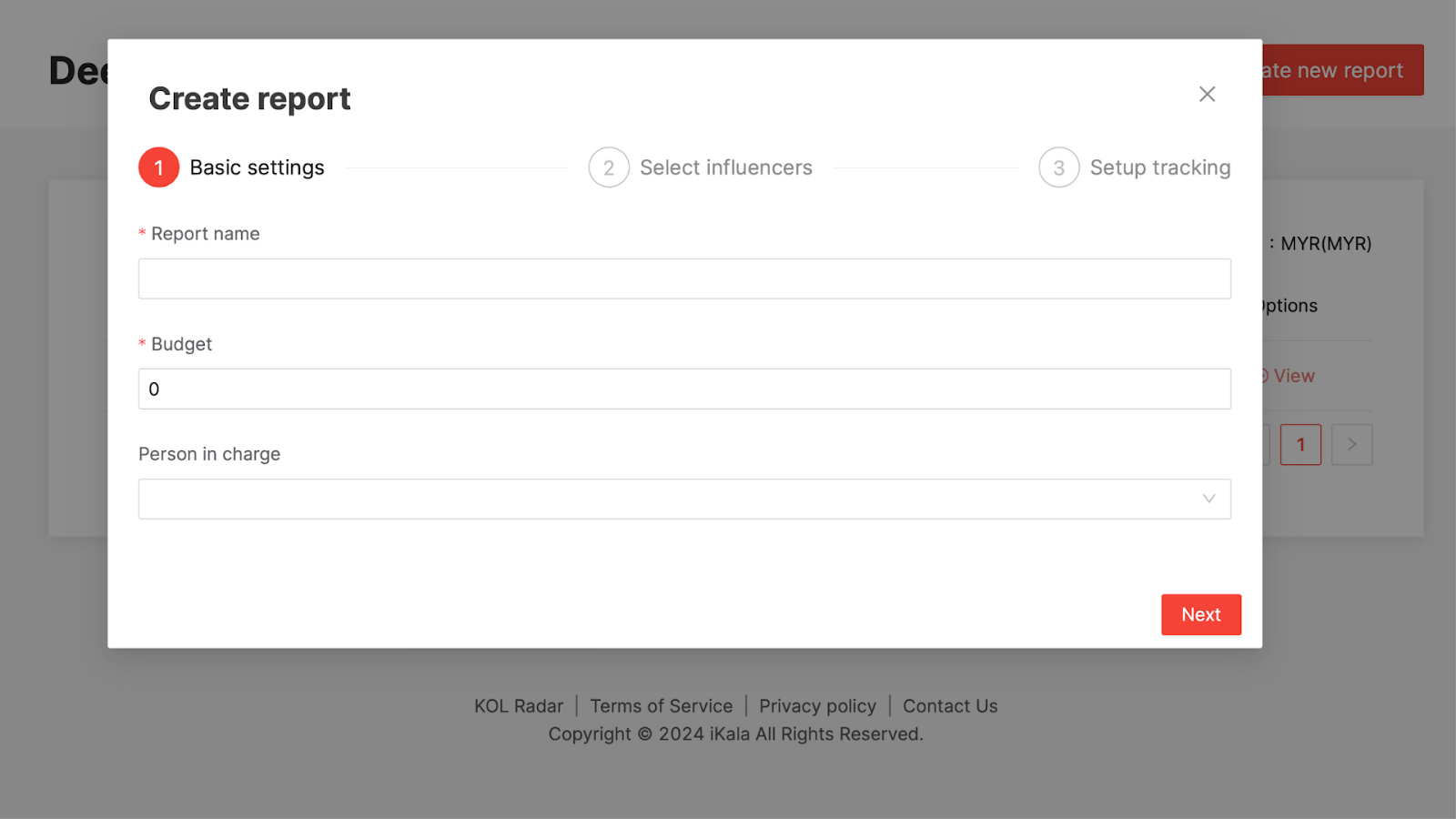
Source: KOL Radar
Conclusion
Collaborating with influencers across industries not only combines the strengths of both parties, reduces costs, and enhances collaboration effectiveness but also leverages the social influence of influencers to increase product competitiveness and create significant brand opportunities. KOL Radar’s AI influencer database utilizes comprehensive data to assist brands in quickly analyzing the strengths of influencers and finding the most suitable ones to execute influencer marketing strategies.
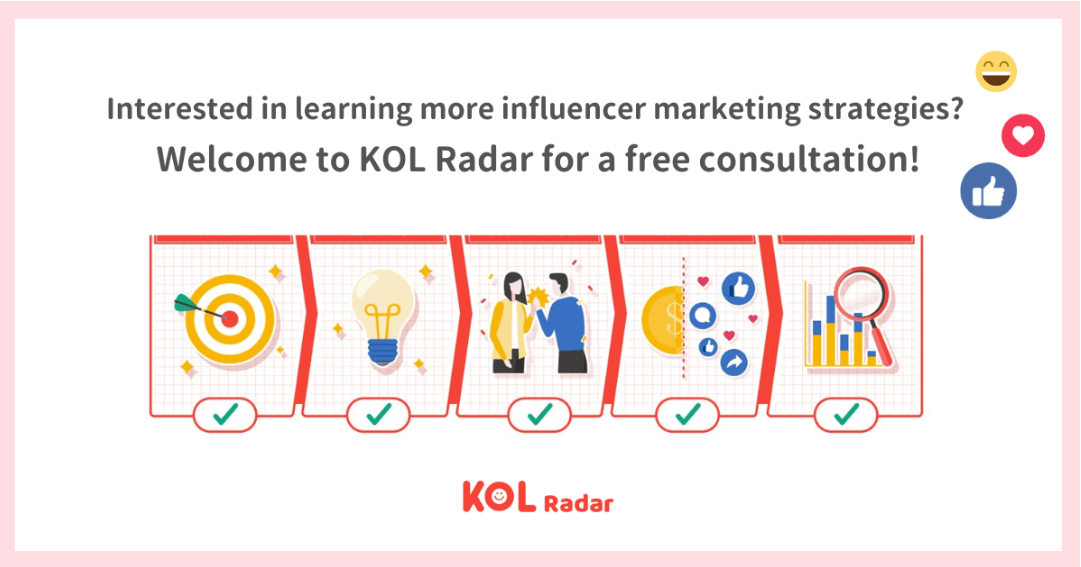
Registering for Free
If you would like to further understand influencer marketing, feel free to consult KOL Radar for free at https://www.kolradar.com/en/solution.
▶︎ This article may not be reproduced, reprinted, publicly broadcast, or publicly transmitted without permission. The copyright and image rights of the pictures and data referenced in this article belong to their respective owners.



